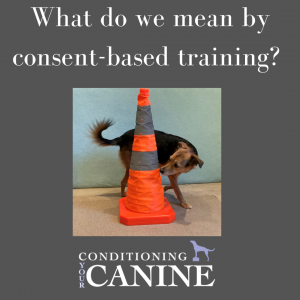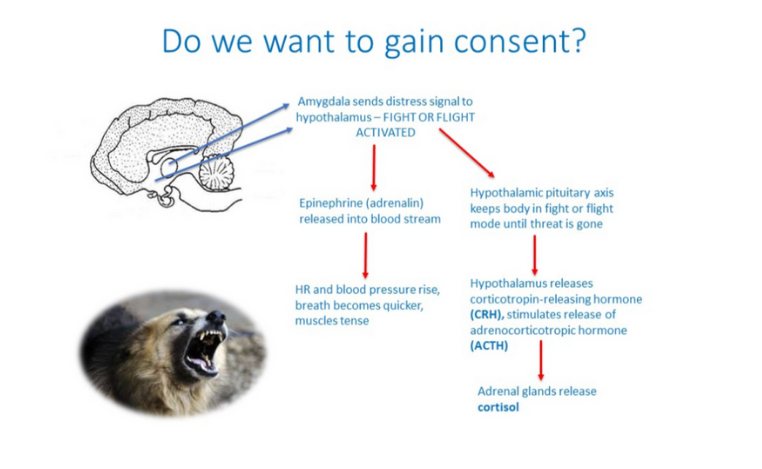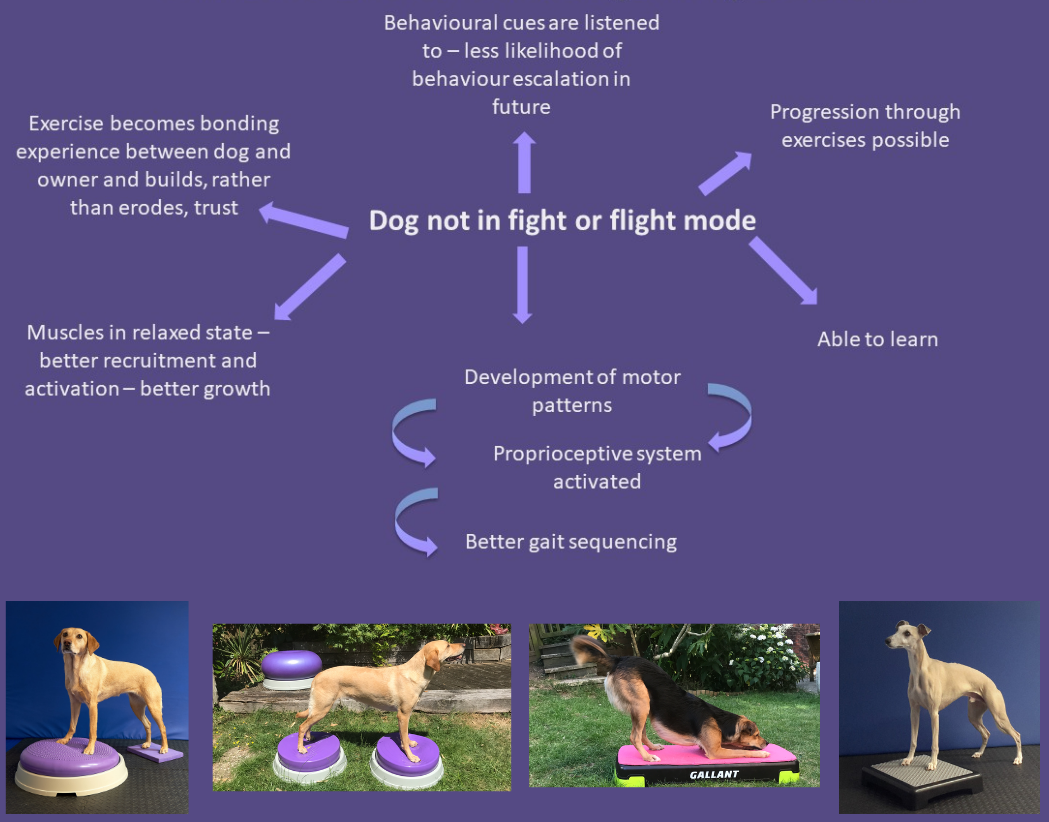
Consent in canine conditioning throws up a lot of questions. What do we mean by consent-based training? Is it possible to gain consent when training your dog? Does gaining consent make a difference to training? What does canine consent look like? Why do we want to gain consent? In this post, we will look further into canine consent and why we feel it is so important.

Here is a (very brief and simplified!) chart to show what happens in your dog’s brain and body when they are stressed in a situation and the “fight or flight” system is activated. A cascade of hormones are released in the body; the physical effects of which are increased heart rate and blood pressure, quicker respiration, tense musculature and a heightened sensory system, as well as quite an unhappy dog and one which may feel the need to react to defend themselves. In addition to the obvious risks to everyone involved (including the dog!) and the ethical considerations of working with an animal in a distressed state, there are also negative implications for the training techniques. Some of the hormones released during fight or flight (namely cortisol) reduce protein synthesis and prevent tissue growth, which is not productive in the rehab or conditioning process.
Another hormone released, called corticotropin-releasing hormone, or CRH, limits the ability of the brain to collect and store memories, meaning a dog in fight or flight is not in a receptive state for learning and absorbing information. The proprioceptive system of the dog is also not activated effectively when stressed.
So if we are trying to retrain gait patterns, teach specific conditioning exercises, improve proprioception (and we are always trying to improve proprioception!) or even introduce a dog to new equipment, we are not going to be getting very far if they are stressed. This is why, for us at CYC, ensuring your dog consents to and is actively involved in any training or conditioning programme, is so important.
This slide below helps to show what we see as the main benefits of gaining consent for exercise programmes and treatments alike.

So, consent based training is the way to go! For the benefit of your canine patients, their owners and for the most effective progression with the exercise programmes you recommend.
But what does canine consent actually look like? At CYC we define this as the dog being a willing and active participant in the conditioning exercises. They should approach their task in a calm but focussed manner, interacting happily with their owner/trainer.
We pay close attention to subtle body language and behavioural signs that can give us clues as to how comfortable a dog is with a particular situation – for instance, lip licking and yawning can be a dog’s way of saying “this is a bit too much for me right now”, so in response we might slow things down, or try a different approach. Each dog has different levels of tolerance, and just like people, some shout loudly if uncomfortable, but some might just whisper, so we need to be watching for these signs all the time. It is also vital to look out for subtle signs of fatigue (see the section on fatigue in The Foundations document) so that our dogs are not worked past their physical or mental tolerance level.
Working at each dog’s pace (not at a pace defined by our training aims), reading body language and behavioural signals and paying attention to them, and breaking training sessions down into manageable chunks are all ways we can ensure that the dogs in our care are treated fairly and with respect.
Training in this manner ensures that the conditioning process becomes a bonding experience for owner and dog and that the process is also as safe, fair and effective as possible.
All the exercises on the CYC platform are designed with a consent-based focus and the Foundations document also covers the key points of training in this manner so you can feel confident supporting your clients with this approach in the home exercises programmes you recommend.
